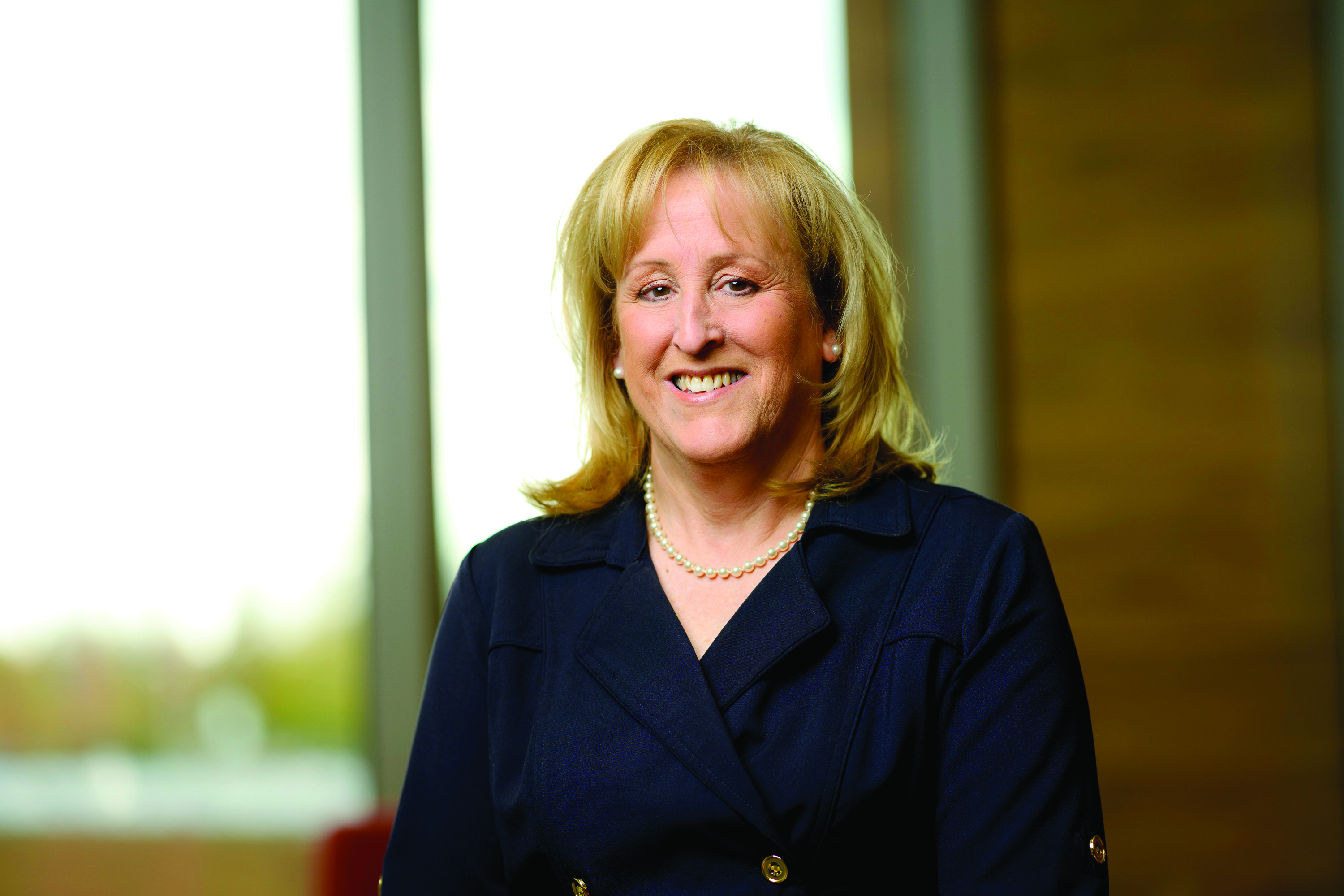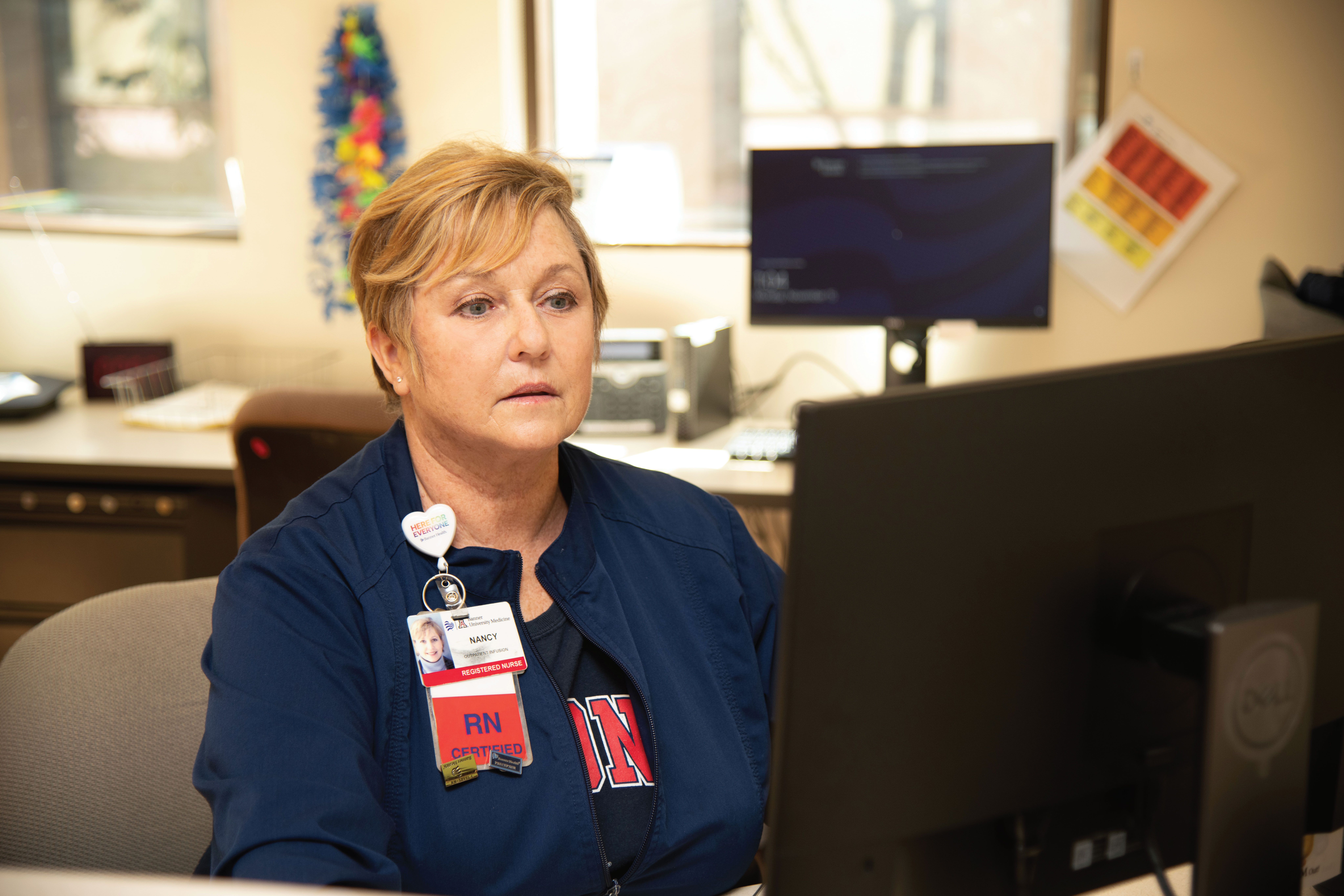Train and Retain: From Orientation to Leadership, Here Are the Strategies That Experienced Staff Developers Use
The oncology nursing specialty is in dire need of a solid foundation of eligible staff. As of 2020, more than 51% (https://www.aonl.org/sites/default/files/aone/Aging-Workforce.pdf) of the nursing workforce was aged 40 years or older, and the COVID-19 pandemic exacerbated (https://ojin.nursingworld.org/MainMenuCategories/ANAMarketplace/ANAPeriodicals/OJIN/TableofContents/Vol-26-2021/No2-May-2021/The-Impact-of-COVID-19-on-the-Nursing-Workforce-A-National-Overview.html) underlying factors such as stress, physical and mental health, and inequities present in the profession for decades.
Recruiting, supporting, and retaining nursing staff have never been more critical than in today’s environment. Two ONS members share their best practices for every step of staff development, from orienting new nurses to supporting them at the administrative level.
Oncology Nurse Orientation
Overall job satisfaction is directly linked (https://uh-ir.tdl.org/handle/10657/3483) to overall training satisfaction, which makes effective orientation an essential component of recruiting and retaining oncology nurses.

“New graduates, as well as experienced RNs transitioning into new roles, need motivation, resources, and mentorship to be successful,” ONS member Debra Havranek, MSN, RN, OCN®, nursing professional development specialist at Memorial Sloan Kettering (MSK) Cancer Center in New York, NY, and member of the Suffolk County ONS Chapter, said. “I believe that orientation is the opportunity to build a foundation of knowledge, skills, and, most importantly, the value of nursing practice.”
Havranek’s institution requires all RNs to complete an enterprise-wide orientation program. MSK also established a leadership triad, comprising a nurse leader, clinical nurse specialist, and nursing professional development specialist, that constructs additional orientation specific to the nurse’s new role and learning needs. The orientation process takes 10–12 weeks to complete.
“The leadership triad collaborates on assigning appropriate mentors and preceptors and evaluates and adjusts the area-specific orientation throughout the process,” Havranek said. “It’s all quite flexible and tailored to each new nurse.”
Barriers to successful orientation relate to current trends in health care, Havranek said. As many nurses age into retirement, new staff are entering the workforce with less clinical experience, and the pandemic has put even more strain on the system.
“To address these barriers, MSK added more education days to our enterprise-wide onboarding program,” Havranek said. “This exposes RNs, especially new graduates, to additional skills and unit shadow experiences and adds a focus on the interprofessional team and patient interactions.”
ONS's Oncology Nurse Orientation Program (https://www.ons.org/licensing-opportunities/oncology-nurse-orientation-program) uses evidence-based education and ONS standards and guidelines to provide nurses who are new to oncology with a foundation in the specialty.
Oncology Nurse Preceptors
Preceptorship gives student and novice nurses the clinical knowledge, confidence, workplace socialization, and skills to excel in the profession. And the relationship supports preceptors, as well: they benefit (https://www.sciencedirect.com/science/article/abs/pii/S1471595317302937) from affirmation, legacy, friendship, reciprocal learning, and satisfaction in helping others.

“To build an effective nurse preceptor, managers need to recognize the potential in their staff,” ONS member Nancy Harrington, RN, BSN, MS, OCN®, infusion nurse at Banner University Medical Center in Tucson, AZ, and member of the Southern Arizona ONS Chapter, said. “Someone who identifies as a lifelong learner is generally an excellent preceptor. They possess strong clinical skills and passion for their role but are also an effective communicator.”
Also consider that preceptorship may not be suited to all nurses, even if they have exceptional experience to share. “Not all nurses are good teachers, nor do all nurses want to precept,” she said.
Harrington urged managers to equip preceptors with the tools they need to be effective, including:
- Background information on their preceptee
- Orientation guide
- Timeline of expectations
Innovative approaches (https://journals.lww.com/jaanp/Abstract/2019/01000/The_one_minute_preceptor_model__A_systematic.8.aspx) like the virtual Preceptor Education Program (https://preceptor.ca/) and One-Minute Preceptor teaching model use teaching techniques like feedback and assessment of a preceptee’s clinical reasoning to help nurses overcome barriers to preceptorship when implementing a formal program isn’t feasible.
“Preceptors should not be expected to take on a full patient load while orienting a new nurse. And gradually increase the preceptee’s assignments as they become more confident and skilled in their role,” Harrington added. “Often preceptors appreciate help from leadership to identify better ways to ensure the preceptee’s success. Make sure assignments are appropriate and preceptors feel supported.”
Oncology Nurse Staff Education
“Today’s nurses are seeking real-time education. They are adult learners, regardless of their generation, and crave resources that are available to them on their time frame and that meet their individual learning style,” Havranek said. “Educators have had to rise to the development of new platforms and resources to offer staff, such as simulation, mobile learning, and online education.”
MSK’s process for identifying and developing educational materials is team based and incorporates experts from diverse backgrounds and clinical experience. The staff education team collaborates to conduct learning needs assessments and obtain nurse feedback, which guides the direction and development of educational resources.
Throughout her practice Havranek has found that most oncology nurses need education that covers policy and practice specifics like care coordination and suggested resources for patients.
“Continuous evaluation on all educational materials is key to ensure effectiveness and positive outcomes are achieved,” Havranek said. “Education must change and expand to meet those changes for the future of nursing.”
Oncology Nursing Leadership
“I am passionate about nursing leadership because it has fulfilled me over the years,” Harrington, who helped develop ONS’s leadership competencies (https://www.ons.org/leadership-competencies), said. “In my many roles as a nursing leader, I feel I have contributed to the development, growth, and job satisfaction of those who have worked for me. Both directly and indirectly, this ultimately improves patient satisfaction.”
Leadership is an essential competency (https://nam.edu/publications/the-future-of-nursing-2020-2030/) for nurses, but related skills are not a standard part of their education (https://www.cambridge.org/core/journals/journal-of-clinical-and-translational-science/article/an-eleadership-training-academy-for-practicing-clinicians-in-primary-care-and-public-health-settings/989FBBFD94770E104495B327D9359B02) and training. Basic leadership skills cross all levels, including individual, group, governance, and administrative. Harrington outlined some specific considerations for each level:
Individual: Preceptors and other individual leaders have mastered their nursing skills and are willing to use the appropriate policies and resources to teach others. Effective, open communication is a must. Individual leaders should have clear expectations and recognize when teaching methods are and are not successful.
Group: Effective leadership groups build on the individual leader skillset but also recognize how interprofessional collaboration plays a role. Leadership groups set an expectation that all members contribute and are respected but identify a leader to prevent groupthink.
Governance: Leaders should empower nurses to practice shared decision-making by encouraging accountability for choices that affect staff. They are conduits between leadership and the nursing staff directly involved in point-of-care policies, procedures, and processes.
Administrative: Responsible for ensuring a quality practice environment, leaders must have a vision for the future and a clear understanding of their organization’s cultures, roles, and structures. Administrative leaders must deliver clear and consistent messages about their commitment to excellence and their organization’s goals and values. They also must be able to identify and invest in formal and informal leaders.
At any level, “effective leaders empower their staff to develop to their fullest potential. They cultivate an environment of teamwork, resulting in higher job satisfaction,” Harrington said. “Ineffective leaders do not adequately support staff, which can result in a hostile work environment, lack of mutual respect, and greater staff turnover.”
Leadership training challenges center around lack of time and costs, but virtual resources are a promising solution. One study showed that 88% of clinician participants reported that the e-Leadership Academy course improved their daily practice. Almost all participants (96%) reported that they were either “very satisfied” or “satisfied” with the online training, and 92% said that they were likely to recommend (https://www.cambridge.org/core/journals/journal-of-clinical-and-translational-science/article/an-eleadership-training-academy-for-practicing-clinicians-in-primary-care-and-public-health-settings/989FBBFD94770E104495B327D9359B02) it to a colleague.
“Consider alternative compensation for leadership involvement such as clinical ladder points or the opportunity to publish or contribute to a poster presentation at a national meeting,” Harrington said. “Check in frequently and be willing to change direction if necessary. What is working? What isn’t? Recognize your mistakes and learn from them. This demonstrates to your staff that even mistakes are teachable moments and can help to develop more effective work practices.”
Harrington added that institutions can foster commitment to leadership by choosing projects that are relevant and of personal value to team members. Acknowledging staff when they go above and beyond (https://voice.ons.org/news-and-views/bolster-your-team-for-better-well-being) is another simple way to promote leadership, staff development, and even well-being.
“Time is precious commodity and your efforts to take time with staff, either individually or in small groups, is invaluable. We all want to be heard and acknowledged,” Harrington said. “So follow through. If you say you are going to address an issue, do it, and communicate the results. Celebrate the wins daily, give staff an opportunity to grow in their roles, and take on leadership responsibilities as appropriate.”
